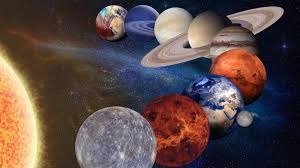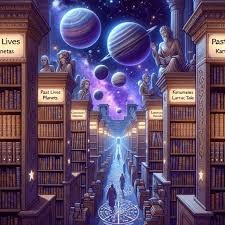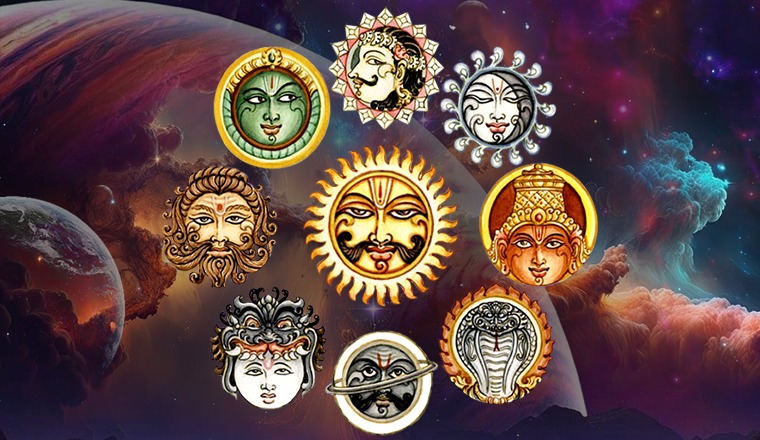Astrology has long been more than a method of predicting the future; it’s a tool for deep introspection, offering insight into one’s spiritual journey and karmic lessons. The interpretation of a natal chart allows individuals to explore their soul’s blueprint, understand past life influences, and gain clarity on the spiritual growth they are meant to achieve in this lifetime. Through the positions of the planets, signs, and their interrelationships, astrology reveals both challenges and opportunities for self-realization.
A natal chart, also known as a horoscope, represents the positions of the celestial bodies at the moment of an individual’s birth. This chart is believed to reflect the soul’s purpose, offering a roadmap for personal growth and spiritual development. It provides key insights into one’s strengths, weaknesses, and life purpose. By examining the positions of the Sun, Moon, and ascendant (known as the lagna in Hindi), astrologers can discern a person’s personality traits and how they navigate life’s experiences. The Sun represents one’s core identity and ego, while the Moon symbolizes emotions and subconscious memories. Together, they reveal the dynamic between one’s outward personality and inner emotional life, shaping how an individual interacts with the world.

Each planet in a natal chart serves as a spiritual teacher, guiding the individual toward specific lessons and growth. Saturn, often referred to as the “Lord of Karma”, holds particular significance. It is associated with discipline, responsibility, and hard-earned wisdom. Wherever Saturn is placed in a chart, it indicates areas of life where one faces karmic challenges. These are often tied to unresolved issues from past lifetimes. While Saturn’s influence can bring hardships, its ultimate aim is to teach perseverance and spiritual maturity. It encourages individuals to work through their difficulties and, in doing so, become stronger and more self-aware.
In contrast to Saturn’s more difficult lessons, Jupiter represents expansion, abundance, and spiritual wisdom. As the planet of growth and optimism, Jupiter offers guidance toward one’s higher purpose. In astrology, Jupiter’s placement in a chart highlights where opportunities for growth, learning, and spiritual understanding exist. It encourages individuals to seek knowledge, broaden their horizons, and cultivate a sense of faith in the larger cosmic order. While Saturn teaches through limitation, Jupiter teaches through abundance, showing that spiritual development comes not just through hardship but also through the pursuit of wisdom and joy.
Another key element in understanding karma through astrology is the North and South Nodes of the Moon. These are not physical planets but mathematical points that represent the soul’s karmic journey. Ketu (the South Node) symbolizes past life experiences and talents, indicating areas where one feels comfortable and accomplished. However, it also represents old habits or attachments that must be let go for further growth. In contrast, Rahu (the North Node) points toward the new experiences and lessons the soul must embrace in this lifetime. While the North Node’s energy often feels unfamiliar and challenging, it represents the direction of the soul’s spiritual evolution. Balancing the energies of Rahu and Ketu allows an individual to harmonize past life knowledge with the present life’s purpose.

The concept of karma is central to both astrology and Hindu philosophy. Karma is the law of cause and effect, meaning that actions from past lives influence current circumstances. In astrology, the positions of the planets, particularly retrograde planets, can indicate unresolved karmic issues. Retrograde planets are those that appear to move backward in their orbit, symbolizing areas where an individual may have unfinished business from previous lives. For example, a retrograde Venus may suggest unresolved lessons related to love, relationships, or self-worth. Such placements urge the individual to work through these karmic lessons to achieve balance and healing.
Astrology is not only a means of understanding past karma but also a tool for self-realization. By interpreting the planetary placements and aspects in a chart, individuals can gain a deeper understanding of their personality, motivations, and life purpose. This awareness fosters spiritual growth, allowing individuals to align more consciously with their higher selves. Astrology offers a mirror, reflecting both the strengths and weaknesses of the individual. By recognizing these qualities, one can work toward personal development and greater harmony with the universe.
Moreover, astrology highlights the importance of timing in spiritual growth. Astrological transits — the current movements of the planets — can trigger significant life events or inner transformations. These transits activate different areas of the horoscope, creating opportunities for growth, healing, or even crisis. For instance, a challenging transit involving Pluto, the planet of transformation, may push an individual toward confronting deep psychological or emotional issues. Though painful, these experiences are often catalysts for profound spiritual awakening. Understanding transits allows individuals to navigate these periods with greater awareness, recognizing them as part of their soul’s journey toward enlightenment.
In conclusion, the interpretation of a natal chart offers much more than a glimpse into one’s personality or future. It serves as a profound tool for spiritual self-realization and karmic understanding. By examining the positions of the planets, the interplay between past life karma and present life purpose becomes clear. Through astrology, individuals gain insight into their soul’s journey, learning to work with their strengths, overcome challenges, and grow spiritually. The ancient wisdom of astrology reminds us that we are not just passive recipients of fate but active participants in shaping our destiny, guided by the stars and planets toward our highest potential.







